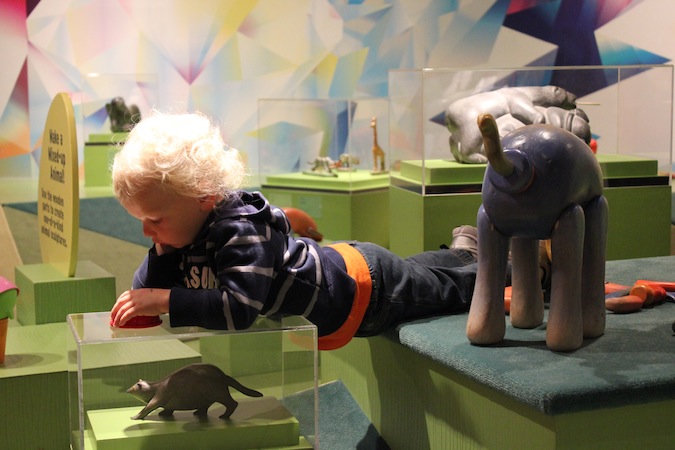The first generation of the Wonder Room closed last Sunday. On Monday we removed the Calder mobile and the giant Balkenhol Head. We boxed up the dowel rods, dishes, and animal parts. We tore down the Fort. In a few weeks the space will re-open with an entirely new look – new art, new activities, new furnishings.
It’s hard to believe that the Wonder Room has been open for nearly 3 years. It’s also hard not to be nostalgic as we pack up.
I have often said that the Wonder Room is a testament to the maxim “watch what you wish for.” Five years ago, we dared to wish for a different kind of gallery in our new Center for Creativity. We wished for a space that provokes visitors of all ages to be curious, to imagine, to play. We wished for a place where families with children could engage together. We wished for a gallery that was not business-as-usual – a slightly quirky and unpredictable space that breaks the rules about how an art museum should look.
Some people were skeptical. Some said that we would not attract families. Some could not imagine the promise of great art mixed with a quirky dark room, funky floors, and recycled kitchen utensils.
To be honest, we knew that we were taking a big risk. We knew all along that this new experiment could fail.
But it didn’t.
When we opened the doors to the Wonder Room on January 1, 2011, we never anticipated its success and popularity. But since that day, the Wonder Room pulsed with activity. Families lingered for hours. Teenagers gathered. Engineers attending a workshop spent their lunch hour building with wood dowels and rubber bands. On more than one occasion, I witnessed a parent escorting a frenzied child screaming, “But I don’t want to leave the art museum!”
What I have learned along the way is that although we can’t ever assume or dictate what visitors do here, we can set the stage to foster certain types of experiences. We can make intentional decisions to invite curiosity and exploration. We can make design decisions that coax visitors of all ages to imagine and create. Although we did not design the Wonder Room specifically for young children, it was 2 year-old Mason, pictured here, who recently taught me the most about wonder and discovery.
Five years ago, we wished for a special gallery that promotes imagination and play. And here is what I have learned: Watch what you wish for, because if you dream, plan, and take risks, it just may happen.
Visitors Stories and Conversations is a biweekly blog series highlighting the stories behind many of our delightful visitors.
[Please note: The Wonder Room is closed for reimagining while we transform it into a magical forest with woodland creatures. It will be back January 2 (but CMA members can enjoy sneak-preview visits from December 14 until the public reopening). Join now and see it first at a special member preview on December 14.]

